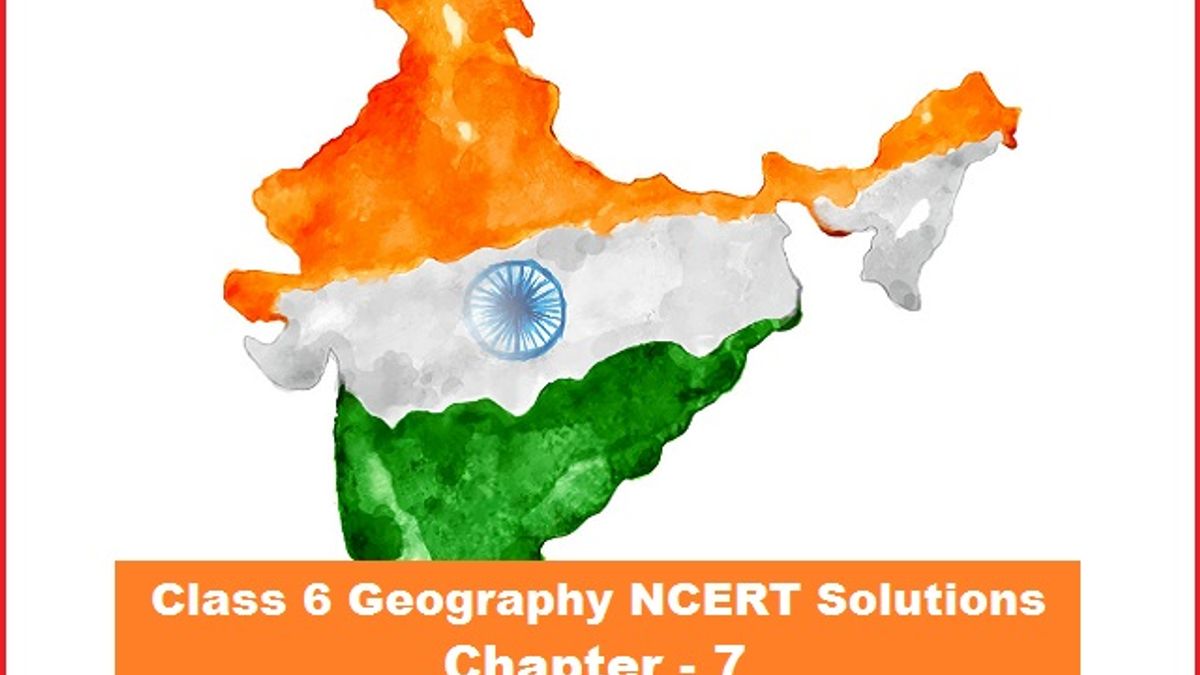Check below the NCERT Solutions for Class 6 Geography Chapter 7 - Our Country – India:
Content:
7.1 Book PDF
7.2 Exercise Questions with Answers
7.3 Map Skills
7.1 Book PDF:7.1 Book PDF
7.2 Exercise Questions with Answers
7.3 Map Skills
Download chapters 7 of Our Country – India in PDF file from the links given below. Solutions to these chapters with important extra questions are also available on the below page.
7.2 Exercise Questions with Answers:
Answer the following questions briefly.
Q. Name the major physical divisions of India.
A. Major physical divisions of India:
Q. India shares its land boundaries with seven countries. Name them.
A.
Q. Which two major rivers fall into the Arabian Sea?
A. The rivers Narmada and Tapi fall into the Arabian Sea.
Q. Name the delta formed by the Ganga and Brahmaputra.
A. Sunderbans, in West Bengal, is the delta formed by the Ganga and Brahmaputra.
Q. How many States and Union Territories are there in India? Which states have a common capital?
A. There are 28 states and 7 union territories in India. Punjab and Haryana have a common capital ‘Chandigarh).
Q. Why do a large number of people live in the Northern Plains?
A. The Northern Plains are generally flat and level land, having alluvial deposits laid down by the rivers such as the Indus, the Ganga, the Brahmaputra, and their tributaries. These river plains provide fertile land for cultivation. Hence, a large population prefers to live here.
Q. Why is Lakshadweep known as a coral island?
A. Lakshadweep islands lie in the Arabian sea. They are formed of coral deposits. Coral “polyps are short-lived microscopic organisms, which live in large groups in shallow, mud-free, and warm waters. The islands lie opposite the coast of Kerala, in the Arabian sea.
Q. Name the major physical divisions of India.
A. Major physical divisions of India:
- The Himalayas
- The Northern Indian Plains
- The Great Indian Desert
- The Peninsular Plateau
- The Coastal plains
- The two groups of Islands.
Q. India shares its land boundaries with seven countries. Name them.
A.
Q. Which two major rivers fall into the Arabian Sea?
A. The rivers Narmada and Tapi fall into the Arabian Sea.
Q. Name the delta formed by the Ganga and Brahmaputra.
A. Sunderbans, in West Bengal, is the delta formed by the Ganga and Brahmaputra.
Q. How many States and Union Territories are there in India? Which states have a common capital?
A. There are 28 states and 7 union territories in India. Punjab and Haryana have a common capital ‘Chandigarh).
Q. Why do a large number of people live in the Northern Plains?
A. The Northern Plains are generally flat and level land, having alluvial deposits laid down by the rivers such as the Indus, the Ganga, the Brahmaputra, and their tributaries. These river plains provide fertile land for cultivation. Hence, a large population prefers to live here.
Q. Why is Lakshadweep known as a coral island?
A. Lakshadweep islands lie in the Arabian sea. They are formed of coral deposits. Coral “polyps are short-lived microscopic organisms, which live in large groups in shallow, mud-free, and warm waters. The islands lie opposite the coast of Kerala, in the Arabian sea.
Tick the correct answer :
Q. The southernmost Himalayas are known as
Q. Sahyadris is also known as
Q. The Palk Strait lies between the countries
Q. The Indian islands in the Arabian sea are known as –
Q. The oldest mountain range in India is
Q. The southernmost Himalayas are known as
- (1) Shivalik
- (2) Himawari
- (3) Himachal
Q. Sahyadris is also known as
- (1) Aravali
- (2) the Western Ghats
- (3) Himadri
Q. The Palk Strait lies between the countries
- (1) Sri Lanka and the Maldives
- (2) India and Sri Lanka
- (3) India and Maldives
Q. The Indian islands in the Arabian sea are known as –
- (1) Andaman and Nicobar Islands
- (2) Lakshadweep Islands
- (3) the Maldives
Q. The oldest mountain range in India is
- (1) Aravali hills
- (2) the Western Ghats
- (3) Himalayas
Fill in the blanks :
Q. India has an area of about ______.
A. 3.28 million sq. km
Q. The Greater Himalayas are also known as ______.
A. Himawari
Q. The largest state in India in terms of area is ______.
A. Rajasthan
Q. The river Narmada falls into the ______sea.
A. Arabian
Q. The latitude that runs almost halfway through India is ______.
A. Tropic-of Cancer
Q. India has an area of about ______.
A. 3.28 million sq. km
Q. The Greater Himalayas are also known as ______.
A. Himawari
Q. The largest state in India in terms of area is ______.
A. Rajasthan
Q. The river Narmada falls into the ______sea.
A. Arabian
Q. The latitude that runs almost halfway through India is ______.
A. Tropic-of Cancer
5.4 Map Skills:











